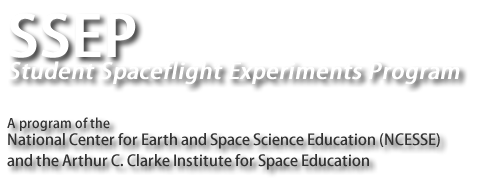Information to be determined is in RED TEXT below.
Information that is subject to change is in GREEN TEXT below.
Last update of this page: May 14, 2025, 9:02 am ET
Payload Ferry Flights and ISS Crew Data
Ferry Vehicle to ISS: SpaceX CRS-34
Current Launch Date: April 2026 (useful reference NASA Consolidated Launch Schedule at nasa.gov)
Crew: none
Launch Site: Launch Complex (LC) 39A, NASA Kennedy Space Center, FL
Berthing at ISS: 1 to 4 days after launch
Launch Date History:
Initial Launch Date: April 2026
Ferry Vehicle for Return to Earth: SpaceX CRS-34
Crew: none
Unberth/Landing Date: TBD
Landing Site: splashdown likely off Florida coast
Payload Duration on ISS: nominally 4-6 weeks; expectation 4 weeks
Notable: visit the NASA ISS website for a comprehensive overview of ISS construction, on-orbit research, operations, crews, and multimedia galleries; read about the SpaceX Falcon 9 rocket and Dragon spacecraft
ISS Crew for SSEP Mission 20 Payload Operations: Expedition TBD (see Expeditions Schedule at nasa.gov) crew to be listed once closer to launch date
SSEP Mission 20 to ISS: Payload and Program Data
Payload Designation: SSEP22 – Atlantis, named for NASA’s Space Shuttle orbiter Atlantis, which carried the second SSEP payload of experiments on May 16, 2011. The flight was designated STS-135, and was the final flight of the U.S. Space Shuttle Program. Starting with Mission 19 to ISS, SSEP experiment payloads are named for the orbiter vehicles from the NASA Space Shuttle Program. (For SSEP Mission 16-18, experiment payloads were named for NASA’s robotic lunar exploration programs in advance of the Apollo missions; for SSEP Missions 12 to 15, experiment payloads were named for NASA human spaceflight programs; for SSEP Missions 5 to 11, experiment payloads were named for Apollo Command Modules; prior to Mission 5, payloads were named for Apollo Lunar Modules.)
Number of Student Team Flight Experiments: 4
4 communities are participating in SSEP Mission 20 to ISS
4 flight experiments were selected, with 4 communities each flying 1 experiment
Payload: Suite of Fluids Mixing Enclosure (FME – Mark II) Mini-laboratories
Stowage: Nanoracks Express Rack in the Japanese Experiment Module (JEM; also nicknamed Kibo) on ISS
History:
The 22nd SSEP flight opportunity—SSEP Mission 20 to the International Space Station—was announced by the National Center for Earth and Space Science Education (NCESSE) and the Arthur C. Clarke Institute for Space Education on September 13, 2024, with accompanying Video Clips describing SSEP by Center Director, Dr. Jeff Goldstein: Clip 1 (NASA), Clip 2 (NASA)
Current Status:
Flight experiments have been selected; flight teams are optimizing their experiments in advance of NASA Flight Safety Review.
A List of Important SSEP Mission 20 to ISS Subpages:
SSEP Mission 20 to ISS: Critical Timeline
SSEP Mission 20 to ISS: Mini-Laboratory Operation
SSEP Mission 20 to ISS: Mission Patch Art and Design Competition
